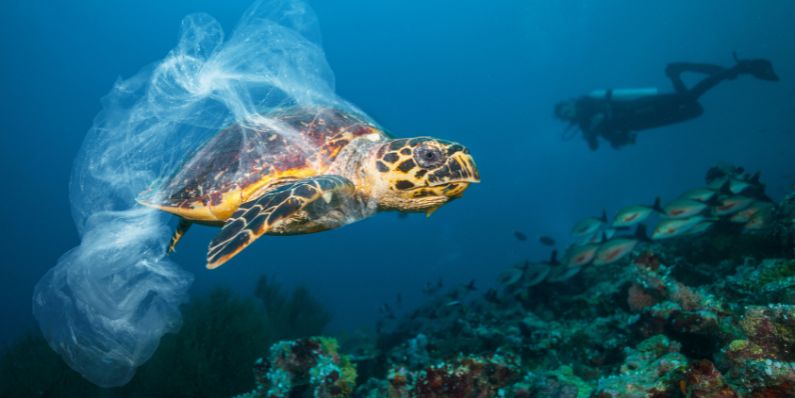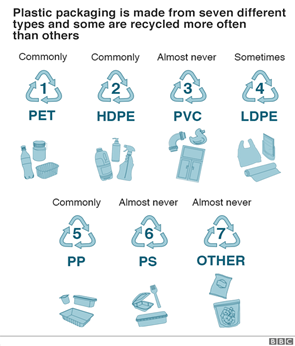We marked the 54th World Earth Day on April 22, 2024, and the 33rd World Oceans Day on June 9, 2024. These occasions hold significance beyond their calendar dates. This year's Earth Day theme, "Planet vs. Plastic," highlights the critical need to combat plastic pollution. Similarly, World Oceans Day, with its theme "Awaken New Depths," emphasizes the importance of exploring and preserving our oceans. Given the prevalence of plastic pollution in our environment and especially in our water bodies, it's important to delve deeper into the Earth Day theme on World Oceans Day 2024.

Approximately 40% of the plastic produced globally each year is single-use plastic and because it is persistent and doesn't break down organically, it stays on the planet for thousands of years. Plastic pollution is intrinsically linked to capitalism, which promotes consumerism, prioritizing convenience over environmental concerns. Without systemic changes, the detrimental impact on our planet will continue to rise.
 If you take a closer look, you'll notice that almost everything, from products on shelves to items in your homes and cars, contains plastic. Even the clothes you wear often incorporate a blend of plastic fibers. But did you know that the first synthetic plastic was invented as a replacement for natural products such as ivory? In 1869, John Wesley Hyatt created a substitute for materials like horn, linen, and ivory by treating cellulose derived from cotton fiber with camphor. Additionally, it wasn't until the 1930s that polyethylene was synthesized, and in the 1950s it was commercialized. This means that plastic is relatively new to human and planetary history. So why is human memory so short, and why do people continuously assert that a life without plastic is impossible? The debate on this is lengthy and requires a restructuring of global politics. While we can advocate for that, we also need to bring these main discourses to our realities and grassroots levels. This discussion is necessary because eventually, the solution will have to be local in order to phase out plastic from supply chains. It is highly unlikely for big businesses to phase out plastic but if consumers make a conscious choice as we have observed more recently, big businesses are impacted.
If you take a closer look, you'll notice that almost everything, from products on shelves to items in your homes and cars, contains plastic. Even the clothes you wear often incorporate a blend of plastic fibers. But did you know that the first synthetic plastic was invented as a replacement for natural products such as ivory? In 1869, John Wesley Hyatt created a substitute for materials like horn, linen, and ivory by treating cellulose derived from cotton fiber with camphor. Additionally, it wasn't until the 1930s that polyethylene was synthesized, and in the 1950s it was commercialized. This means that plastic is relatively new to human and planetary history. So why is human memory so short, and why do people continuously assert that a life without plastic is impossible? The debate on this is lengthy and requires a restructuring of global politics. While we can advocate for that, we also need to bring these main discourses to our realities and grassroots levels. This discussion is necessary because eventually, the solution will have to be local in order to phase out plastic from supply chains. It is highly unlikely for big businesses to phase out plastic but if consumers make a conscious choice as we have observed more recently, big businesses are impacted.
As a first step to this behavior change that educators like me anticipate, I will state five facts about plastic that may help you rethink your relationship with plastic.
1. People think that plastic is one ubiquitous material, but it is actually comprises of many types based on their chemical composition and properties. The most common classification system identifies seven main types of plastic, which are represented by resin identification codes (RIC) stamped on plastic items. These types include:
- Polyethylene Terephthalate (PET or PETE)
- High-Density Polyethylene (HDPE)
- Polyvinyl Chloride (PVC)
- Low-Density Polyethylene (LDPE)
- Polypropylene (PP)
- Polystyrene (PS)
- Other (polycarbonate, PTFE/Teflon, or miscellaneous plastics)
Each type of plastic has unique characteristics and applications, and they vary in terms of recyclability, environmental impact, and safety considerations. If you are holding any plastic item in your hand, just turn it upside down to see if a number is indicated. That number gives away the identity of the type of plastic item you own.
2. Most types of plastic are recyclable, but being recyclable does not guarantee that they will be recycled. Being recyclable simply means that they have the potential to be recycled. Additionally, there is a limit to the number of times plastic can be recycled, and it usually depends on the quality of the plastic. Sometimes even PET bottles can only be recycled once, even though they can typically be recycled up to seven times. This is why the concept of circularity, which emphasizes keeping materials in use for as long as possible before discarding them, is essential. Therefore, recycling should be the last option for handling any kind of waste. Instead, we should:

3. Many plastics contain additives that can be harmful to both human health and the environment. These additives are often included to enhance properties such as durability, flexibility, and flame resistance. Some common additives found in plastics include plasticizers, flame retardants, Bisphenol A (BPA), UV stabilizers, antioxidants, pigments, and colors. Some of these additives can pose serious harm to human health; for example, BPA and phthalates are known to be carcinogenic and can cause hormonal imbalances. Additionally, these additives can also have negative impacts on marine life and other ecosystems.
4. Many people are unaware that plastic is produced from naphtha, a byproduct of fossil fuels. This means its impact is twofold: it is linked to greenhouse gas emissions from the extraction of fossil fuels to the disposal of single-use plastic in landfills.
5. Bioplastics are plastics derived from biological sources. There are various types of bioplastics, including those made from starches, cellulose, or renewable polymers like polylactic acid (PLA). However, they are still a type of plastic, and they may not always be a clear alternative to traditional petroleum-based plastics. are plastic that are derived from a biological source.
We hope that these facts offer you a new perspective about your day-to-day choices on buying products from shelves.
I will summarize the overall connection between macroplastic, microplastic and its impacts via this mind map that I created using literature in the figure below.

As an educator it is my responsibility to spread as much awareness about this as possible. We have been a part of several discussion and policy related intervention which I will not be able to discuss here but I hope that this mini blog will allow you to use your role for phasing out of plastic, especially single use plastic from the environment. The United Nations Framework Convention on Climate Change's Article 6 outlined six main areas of activity: international cooperation, public engagement, public awareness raising, public information access, and public participation in education. Education for Sustainable Development (ESD) was also initiated (UNESCO, 2017). In addition to incorporating issues like poverty, climate change, and sustainable consumption into the curriculum, ESD creates dynamic, learner-centered learning environments. In order to adapt to and mitigate the effects of climate change, ESD has also stressed the importance of education in promoting behavioral change and raising awareness. The best approach to solving socio-ecological issues is still up for debate, especially given how local and national sectors and provisions are so often ill-thought, underfunded, overstretched, and undervalued (Bieler et al., 2018). The mass level of knowledge remains the cornerstone of this endeavor, even though education and awareness alone don't seem to be sufficient to change behavior.
If you plan on carrying out activities in your schools and classrooms, please refer to climate change and environmental sustainability module here.
References
UNESCO. (2017). Education for Sustainable Development: Partners in Action. Paris: UNESCO.
Bieler, A., R. Haluza-Delay, A. Dale, and M. McKenzie. (2018). A National Overview of Climate Change Education
United Nations Environment Programme (UNEP). (2023). "Everything you need to know about plastic pollution."


